Planning your own trip? Prepare for your trip
Use Rough Guides' trusted partners for great rates
- Rosario
- Argentina
Book your individual trip, stress-free with local travel experts
Travel to Argentina and you’ll be rewarded with natural wonders and one of the world’s most stylish capital cities, Buenos Aires. Stretching from the Tropic of Capricorn towards the tip of Antarctica, Argentina encompasses a staggering diversity of terrains. You’ll find everything from lush wetlands to the end-of-the-world archipelago of Tierra del Fuego. Its most emblematic landscapes are the flatlands of the Pampas and the dramatic steppe of Patagonia. Read our guide to Argentina for everything you need to know before you go.
Size: Argentina is the world’s eighth-largest country by area.
Population: With a population of around 45 million Argentina is one of the least densely populated countries on the planet.
Origins: Some 97 percent of Argentines are of European origin, largely of Spanish or Italian descent.
Exports: Best known for its beef, Argentina is also a leading producer of wine, wheat, fruits and vegetables.
Nobel Prizes: Argentines have twice been awarded the Nobel Peace Prize. Carlos de Saavedra Lamas, in 1936, for his peace efforts in South America, and Adolfo Pérez Esquivel, in 1980, for his defence of human rights.
Ancient history: The remains of the largest-known dinosaur – the Patagotitan mayorum, were discovered by chance by a farm worker in Patagonia in 2008.
Movies: Argentina has a vibrant film industry and has twice carried off an Oscar for best foreign language film. La historia oficial (The Official Story) won in 1985 and El secreto de sus ojos (The Secret in Their Eyes) in 2010.

Typical colorful houses and facades in the famous La Boca district in Buenos Aires, Argentina © Peter Zaharov/Shutterstock
Argentina has many beautiful sights: the waterfalls of Iguazú; the spectacular Glaciar Perito Moreno; whale-watching off Península Valdés; the handsome lakes and mountains around Bariloche. If you’re planning to travel to Argentina, bear in mind the long distances between key destinations – it’s a huge country.
Many of Argentina’s most rewarding destinations are also its least well known. These include the Ibera Wetlands (Esteros del Iberá), a huge network of lagoons offering close-up encounters with cormorants and caymans. Likewise the Antofagasta de la Sierra, a remote village set amid frozen lakes mottled pink with flamingos; or Laguna Diamante, a high-altitude lake backed by a volcano. Climate and distance mean it’s more sensible and rewarding to concentrate on one or two sections of the country when planning your travel.
Buenos Aires is likely to be your point of entry, as it has the country’s main international airport, Ezeiza. It is an exciting, vibrant city, with an intriguing blend of European architecture and a local flair. You can round off a day’s sightseeing with a tango show, dinner at one of the dozens of fabulous restaurants, or a hedonistic night out.
Due north lies the Litoral, bordering Uruguay, Brazil and Paraguay. Here you’ll find the Iguazú falls.
A highlight in the country’s landlocked northwest is the Quebrada de Humahuaca, a fabulous gorge lined with rainbow-hued rocks. Nearby, in the Valles Calchaquíes, a chain of stunningly scenic valleys, high-altitude vineyards produce the delightfully flowery torrontés wine.
Sprawling across Argentina’s broad midriff are the Pampas, arguably the country’s most archetypal landscape. This subtly beautiful scenery is punctuated by small towns, the occasional ranch and countless clumps of pampas grass (cortaderas). The Pampas are grazed by millions of cattle and planted with huge soya and wheat fields.
They are also where you’ll glimpse traditional gaucho culture, most famously in the charming pueblo of San Antonio de Areco. Here, too, are some of the classiest estancias, offering a combination of hedonistic luxury and horseback adventures.
As you head further west, the Central Sierras loom: the mild climate and beautiful scenery of these ancient highlands have attracted holiday-makers since the late nineteenth century. Within reach is Córdoba, the country’s colonial-era second city.
Keep going west and you’ll get to the Cuyo, with the highest Andean peaks as a snow-capped backdrop; here you can discover one of Argentina’s most enjoyable cities, the regional capital of Mendoza, also the country’s wine capital.
Argentina is home the lion’s share of the wild, sparsely populated expanses of Patagonia (the rest belongs to Chile). It also possesses y the most populous half of the remote archipelago of Tierra del Fuego. These are lands of arid steppe hemmed by the southern leg of the Andes – a row of majestic volcanoes and craggy peaks interspersed by deep glacial lakes. For many people, Patagonia is the first page they turn to in any guide to Argentina.
On the Atlantic side of Patagonia, Península Valdés is a must-see for its world-class marine fauna, including southern right whales, elephant seals and orcas. You may like to trace the region’s associations with Darwin and his captain Fitz Roy in the choppy Beagle Channel off Ushuaia. You could track down the legacy of Butch Cassidy, who lived near Cholila, or of the Welsh settlers whose influence can still be felt in communities like Gaiman, Trelew and – further inland – Trevelin.

Ushuaia Harbor, Tierra del Fuego, Argentina © artincamera/Shutterstock
In this section of our Argentina travel guide we’ll look at the best times to visit.
Spring is perhaps the best time to go to Argentina. The weather in Argentina in spring (Sep-Nov) is perfect almost everywhere, although icy weather is still possible in the far south.
Summer (Dec–Feb) is the only time you can climb the highest Andean peaks, such as Aconcagua. It's also the most reliable time of year to head for Tierra del Fuego, though it can snow there at any time. Buenos Aires is usually hot and sticky in December and January. You should also avoid parts of the north, as temperatures can be scorching and roads flooded by heavy storms.
Autumn (March and April) is a great time to visit Argentina – particularly Mendoza and San Juan provinces for the wine harvests. Visit Patagonia and Tierra del Fuego to see the beech groves as their leaves change colour.
The winter months of June, July and August are obviously the time to head for the Andean ski resorts. Blizzards can cut off towns in Patagonia in winter, and many places in the region close from April to October. Temperatures in the north of the country should be pleasant at this time of year, though Buenos Aires can be bleak in July and August.
A final point to bear in mind when it comes to Argentina travel: many locals take their holidays in January, around Easter and in July. Transport and accommodation can get booked up fast and rates can double. Read more about the best time to visit Argentina.
Though some people travel to Argentina overland, the majority of people arrive via Buenos Aires’ international airport, Ezeiza.
In general, airfares to the country tend to be quite high, but they do vary depending on the route and the season. The highest fares for travel to Argentina are between December and February, around Easter and in July and August. You’ll get the best prices during low season: March to June and September to November. Note also that flying at weekends means higher prices.
Several airlines travel to Argentina from the UK. British Airways and budget airline Norwegian are the only airlines that fly direct from London. Iberia via Madrid skimps on creature comforts but is often cheap.
There are no direct flights from Ireland to Argentina. If you’re trying to keep costs down, consider flying to London with an economy airline and making a connection. Or, you can fly direct to New York or Miami and catch an onward flight from there.
Some routes allow you to take stopovers on the way – sometimes for free. Potential stopovers include Bogotá, Rio and São Paulo in South America; Boston, Chicago, Dallas, Houston, Miami, Newark, Los Angeles and Washington DC in the US; and Frankfurt, Madrid, Milan, Paris and Rome in Europe.
Several airlines, including American Airlines, United and Aerolíneas Argentina, offer daily non-stop flights from the US to Buenos Aires. Flying times to Buenos Aires are around 11 hours from New York and Chicago, and nine from Miami.
There’s less choice if you’re planning to travel to Argentina from Canada, with Air Canada offering the only flight into the country – from Toronto via Santiago de Chile. Consider looking for connecting flights with a US carrier.
The best flight deal to Argentina from Australia and New Zealand is offered by Air New Zealand. In Australia, flights to Argentina leave from Sydney or occasionally Melbourne. There are no direct flights from New Zealand, so you will need to connect elsewhere.
Flights from South Africa to Argentina leave from Cape Town and Johannesburg and usually go via São Paulo; Airfares depend on both the season and duration of stay.
This section of our Argentina travel guide will help you plan your travel around the country.
Getting around Argentina takes longer than you might think; distances are huge, and you are likely to spend a considerable part of your budget on travel. Ground transport (mostly by bus) will give a true impression of the scale of the country and a chance to see the landscape. If you’re planning to cover big distances when you travel in Argentina – especially around Patagonia – domestic flights can save a day or more. The inter-city bus network is extensive but services in remote areas can be poor; in these places, it is worth considering car rental. Train services are run-down and limited and not generally a viable method of traveling in Argentina.
Seven Patagonian lakes – their sparkling waters emerald, ultramarine, cobalt, turquoise, cerulean, sapphire and indigo – linked by a rugged mountain road: a magical route best explored in a 4WD.
Known simply as the Cataratas, the world’s most awe-inspiring set of waterfalls is set among dense jungle, home to brightly coloured birds and butterflies.
The undisputed highlight of La Rioja Province is a World Heritage Site dominated by giant cliffs of deep pink sandstone. Once home to dinosaurs, it’s now the protected habitat of condors, guanacos and foxes.
A visit to one of the world’s few advancing glaciers is a treat for the eyes and the ears; count the impossibly varied shades of blue as you listen to a chorus of cracks, thuds and whines.
The shimmering lagoons of these vital wetlands attract myriad birds, from tiny hummingbirds to majestic herons.
A prehistoric mural, an early finger-printing exercise or ancient graffiti? Whatever it is, this delicate tableau of many hands is one of the continent’s most enchanting archaeological sites.
The prestigious resting place of Argentina’s great and good – even Evita sneaked in – this cemetery is one of the world’s most exclusive patches of real estate.
Take a stroll down the cobbled streets of this bohemian barrio full of tango bars and antique shops, talented street performers and decaying grandeur.
Despite frigid temperatures and extreme altitude – 6,959m – the highest peak outside the Himalayas can be climbed with the right preparation and a knowledgeable guide, making for a world-class mountaineering experience.
Rugged gauchos, nodding pampas grass and herds of cattle are the famous inhabitants of Argentina’s most archetypal landscape.
Whitewashed settlements nestled against polychrome mountains, dazzling salt flats, lush valleys and cactus forests, windswept steppe and deep gorges – some of the planet’s most incredible scenery.
Once Argentina’s most feared penal colony, now the world’s southernmost city, Ushuaia sits proudly on the Beagle Channel, backed by serrated peaks and within striking distance of Tierra del Fuego National Park.
Take a boat or paddle a kayak around the swampy islets and muddy creeks of Tigre. This subtropical town on the capital’s doorstep acts as a gateway to the continent’s second-largest river system.
The world’s biggest dinosaurs once roamed Neuquén Province. Nothing will convey their immensity more than standing underneath their skeletons or seeing their giant footprints in the rock.
Perhaps the most beautiful city in Argentina, Salta La Linda (Salta the Fair) boasts well-preserved colonial architecture, a backdrop of soaring peaks and some wonderful places to sleep and eat.

Mountain Plateau La Puna, Northern Argentina © Galyna Andrushenko/Shutterstock
We’ve expanded our Argentina travel guide to include the following itineraries. They will take you to every corner of the country – and you’ll learn plenty about Argentina no matter which one you choose. You’re unlikely to complete the list, but it will give you a flavour of travel in Argentina and what we can plan and book for you with our Tailor-Made Trips service www.roughguides.com/trips.
Meet your Argentina local travel expert
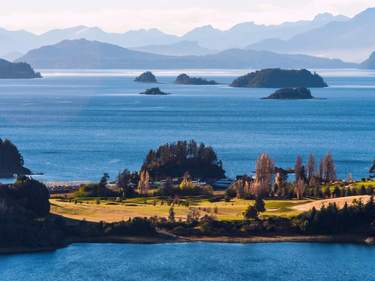
10 days / from2650 USD
The Great Lakes and Glaciers of Argentina
Experience the great outdoors, Argentina-style! Marvel at jaw-droppingly beautiful Patagonian landscapes, walk the shores of deep-blue lakes guarded by snow-capped mountains at Bariloche, explore the stunning Perito Moreno Glacier – experience all of this, and much more, with this unique trip!
view tour ⤍
13 days / from3180 USD
From Chile to Argentina, across the Andean Lakes
Travel from Chile to Argentina across the stunning Andean Lakes, also known as the Lakes District. Beginning in Santiago, you will travel to Puerto Varas, in Chile, and then across the lakes to Bariloche, Argentina, taking in the stunning mountain scenery, before ending your trip in Buenos Aires.
view tour ⤍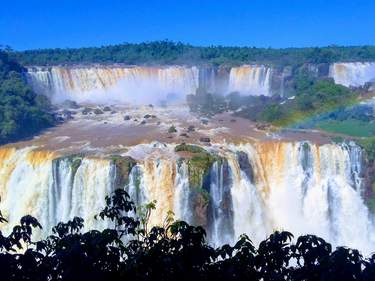
14 days / from1933 USD
An adventure across three countries: Brazil, Argentina & Uruguay
A trip filled with history, culture and nature spread out over three beautiful and unique countries, Brazil, Argentina and Uruguay. Visit some of the most stunning sites, like the Sugar Loaf Mountain, Iguazu Falls and UNESCO World Heritage site Colonia del Sacramento, during this 14-day trip.
view tour ⤍
13 days / from2581 USD
Argentinean Patagonia: from the Coast to the Andes
Explore the region's most fascinating corners: sea life in Puerto Madryn awaits before you head to the most southern city in the world: Ushuaia. Discover Tierra del Fuego before heading out to El Calafate and Bariloche, really soaking in the Argentinean vibes.
view tour ⤍_listing_1621160495398.jpg)
16 days / from3585 USD
Unforgettable Argentina
Argentina has a lot to offer travellers, in this itinerary you will explore the highlights in just two weeks. From busy Buenos Aires you will fly to Iguazu to marvel at the majestic waterfalls before heading south to Puerto Madryn, Ushuaia and El Calafate. Unforgettable Argentina awaits!
view tour ⤍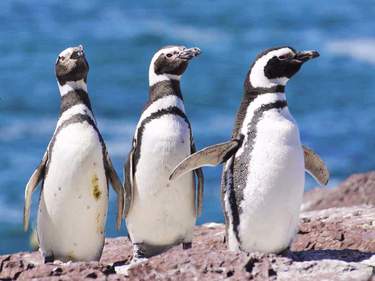
10 days / from2650 USD
Magical Patagonia and Cultural Buenos Aires
Combine exploring the contemporary city of Buenos Aires, with all its luxuries and grand, historical buildings, together with the wild, rugged land of Patagonia. Take in the culture and observe the landscape and wildlife to gain a complete picture of the true Argentina.
view tour ⤍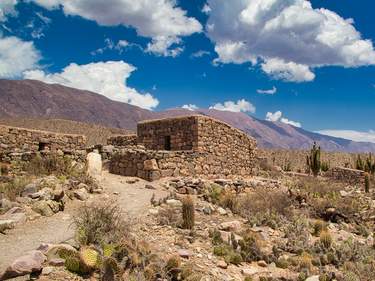
16 days / from5050 USD
Andean Triangle - Chile, Bolivia and Argentina
Start your South American adventure in Santiago de Chile before exploring the wonders of the Atacama desert. A short hop across the border and you'll find yourself in the middle of the Bolivian salt flat. Afterwards, you'll continue to Argentina with Salta and Buenos Aires.
view tour ⤍
13 days / from2500 USD
Argentina: Tango and Glaciers
Visit the grand, edgy and famously seductive Argentine capital of Buenos Aires for tango and culture; then head northeast to see the thundering Iguazú Falls. Finally, it’s off to the end of the Americas to deepest Patagonia for adventure, glaciers and limitless horizons.
view tour ⤍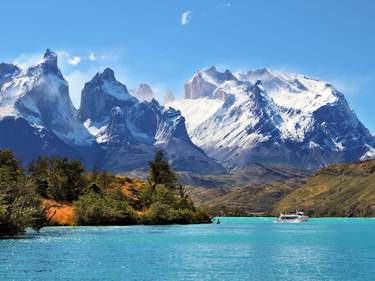
13 days / from6800 USD
Wild Patagonia
Argentina has lots to offer its visitors: a glacier the size of a city, sizzling tango, fashionable barrios, artisan towns, ranches with horses and gauchos and wild untamed natural beauty. From Buenos Aires to Patagonia, you’ll get to see it all in this adventure-laden vacation.
view tour ⤍
7 days / from1400 USD
Tango & Wines in Argentina
Argentina is known for its dances and gastronomy scene, both to be discovered on this trip. Explore Buenos Aires on your own and with a guide, including its famous nightlife before heading to the vineyards of Mendoza, one of the most developed wine regions in the country.
view tour ⤍
14 days / from2271 USD
Multi-country adventures from salt flats to the Andes
South America is full of wonders and this trip packs Argentina, Chile and Bolivia into 2 weeks. Bustling Buenos Aires, beautiful valleys around Salta, the surreal looking surroundings of San Pedro de Atacama, the salt flat of Uyuni as well as Lake Titicaca are all part of this itinerary.
view tour ⤍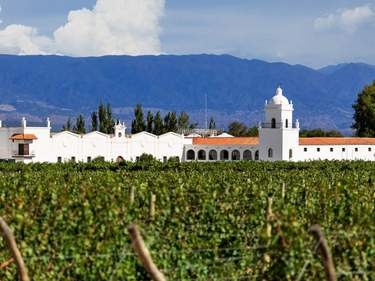
10 days / from2120 USD
South American Wines Trail
All wine lovers unite! Start your tour in Buenos Aires before heading to the wine region of Mendoza. Sample some of Argentina's finest wines and enjoy the beautiful scenery. Afterwards, continue to Santiago de Chile with a day trip to Valparaiso.
view tour ⤍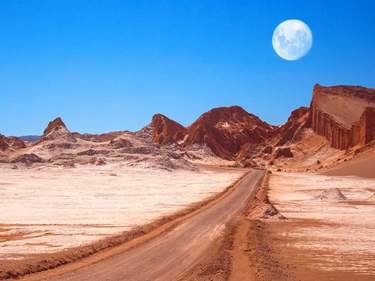
13 days / from2756 USD
Argentina and Chile: Dazzling Cities and Magical Landscapes
Santiago is an emerging city, whilst Buenos Aires has long been a busy metropolis. Both offer historical buildings to admire, a local gastronomy scene to savour and sensuous dances to learn. Not to mention the mountainous terrain and desert landscapes outside the cities waiting to be explored.
view tour ⤍
14 days / from7857 USD
Southern Argentina & Antarctica
Explore the Antarctica on an intimate cruise from Ushuaia, the southernmost city in the world. Start in Buenos Aires before spending a few nights in El Calafate and Ushuaia to then board your cruise. 4 nights in the Antarctic are the highlight of your trip before heading to Chile's capital Santiago.
view tour ⤍
4 days / from420 USD
A city escape to Buenos Aires
Soak in the unique atmosphere of Buenos Aires on this 4-day tour premium tour. Stay at one of the most exclusive hotels and discover Argentina's capital on bike during the day and in style at a Tango show at night.
view tour ⤍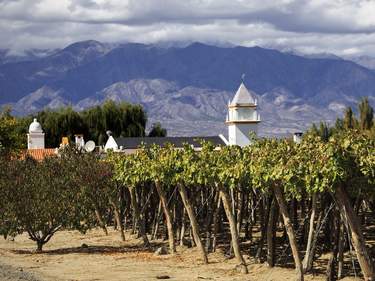
13 days / from2756 USD
Argentina and Chile - Wine Country Explored
Get a taste of the wines of Argentina and Chile on this tour of the country's best bodegas. Sway to the rhythm of tango in Buenos Aires before you head to high altitude towns and absorb stunning mountain scenery. Then it's across the border into Chile to sample Santiago's historic delights.
view tour ⤍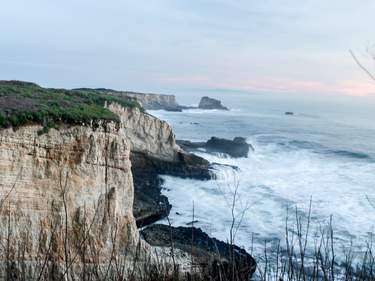
14 days / from3075 USD
Self Drive on the Atlantic Patagonia Blue Route
Travel across wild Patagonia in your own rental car. Full autonomy and freedom means being able to truly go off the beaten track. You'll come across plenty of wildlife like whales and penguins, as well as following Darwin's footsteps across the steppe.
view tour ⤍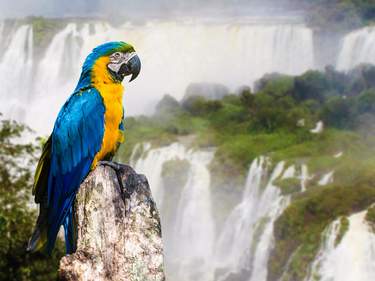
13 days / from2600 USD
Argentina's Northern Highlights
Your journey begins in Bueno’s Aires, the Argentine capital and the home of tango, colonial buildings and cobbled streets. Explore museums, churches, and stunning mountain valleys; be awestruck by the roar of the Iguazú Falls; then explore the wineries of the Central Valley.
view tour ⤍_listing_1621021532632.jpg)
7 days / from1400 USD
From the city to the jungle
Visit two of the most fascinating parts of Argentina: First, the electrifying capital of Buenos Aires in all of its glory before heading out to Puerto Iguazu to discover the majestic Iguazu waterfalls.
view tour ⤍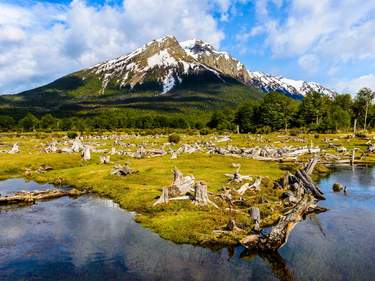
10 days / from2600 USD
South Argentina and the Ends of the Earth
This trip goes to the southernmost point of Argentina and to the ends of the earth. Begin in Buenos Aires, then travel south to El Calafate and explore the stunning Perito Moreno Glacier, before continuing to the southernmost city on earth, Ushuaia, and the Tierra del Fuego National Park.
view tour ⤍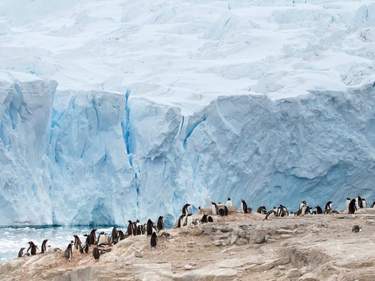
11 days / from15375 USD
Classic Antarctica from Chile
Start and end your trip in Chile and discover the Antarctica on an intimate, Boutique-style expedition boat. Cruise the Drake Passage, visit Cape Horn and fly back to Punta Arenas before returning to the capital Santiago.
view tour ⤍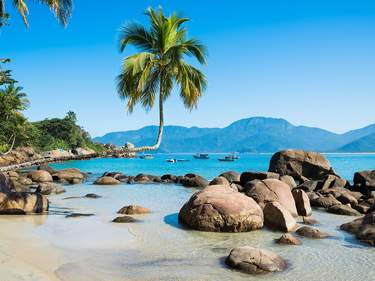
12 days / from2500 USD
Islands & Waterfalls: Ihla Grande and Iguazu
A mesmerizing journey through Brazil and Argentina, starting with the vibrant energy of Rio de Janeiro. Explore the pristine paradise of Ilha Grande, then step back in time in the colonial gem of Paraty. Finally, marvel at the awe-inspiring Iguazu Falls.
view tour ⤍Much of Argentina’s nature highlights are in Patagonia, but there are unmissable sights further north, too, if you can spare a month or so.
Watch whales, seals and sea lions basking in the cool waters off this peninsula in northern Patagonia.
The biggest colony of Magellanic penguins in South America is a delightful sight, and the trip there will likely take you past guanacos, armadillos and more.
Situated on the Beagle Channel, teeming with birds, sea lions and king crabs, Ushuaia provides a base for exploring nearby Tierra del Fuego national park.
One of Argentina’s most visited sights. Watch enormous chunks of blue ice calve off the city-sized glacier or don crampons to walk on top of it.
The northern section of Los Glaciares national park provides some of the country’s best trekking, among jagged peaks and turquoise lakes.
Up in the dry northwest, the multicoloured hues of the Humahuaca make it the pick of the region’s sights.
The enormous Iguazú waterfalls on the Argentina-Brazil border, set in subtropical rainforest, make a steamy, stunning contrast to the icy southern sights.
An enchanting, little-visited ecosystem in Corrientes Province whose marshes are filled with an array of wildlife.
A surprisingly verdant river community, just outside Buenos Aires. It makes for a gentle but impressive end to a tour of Argentina’s natural highlights.
Like Route 66 in the US, Argentina’s Ruta 40 has earned legendary status, inspiring songs, books and of course road trips. It’s the country’s longest highway, running from Patagonia to Bolivia. Count on six weeks if you want to take in all 5224km of “la Cuarenta”.
Ruta 40 starts here, by the Strait of Magellan. It’s a zigzagging route through windswept Patagonian steppe.
Just off the Ruta 40, in the Patagonia wilderness, this World Heritage Site is one of South America’s finest examples of ancient rock art.
This picturesque city is the gateway to the Nahuel Huapi park and Argentina’s Lake District, home to pristine alpine-like scenery, dramatic mountain lakes and ancient trees.
A remote land of rosy lava, ebony gorges, deep karstic caves and flamingo-flecked lagoons in Mendoza Province.
Often inaccessible, this lagoon rewards the adventurous. Enjoy a picnic on the banks of a crystalline brook as you admire the silhouette of Volcán Maipo.
The road in La Rioja Province winds through polychrome mountains that contrast with the verdant vegetation along the riverbanks below.
Stop off at this Catamarca highland village for a top-notch poncho – methods of weaving have been maintained since pre-Hispanic times.
Ringed by mountains, this area of snow-white salt flats is a good place to spot llamas and vicuñas.
Travel to Argentina, and you can find excellent-quality food and drink anywhere. Beef plays a part, of course, but there’s more to the country’s culinary offering. Allow two to three weeks for this foodie guide to Argentina.
The country’s capital has the most cosmopolitan selection of restaurants – including its famous puertas cerradas – with inventive cooking at reasonable prices.
Stay on an estancia to enjoy the best barbecued beef you’ll taste anywhere, right in the fertile heartland where it comes from.
A good place to try the distinctive northwestern cuisine, including the classic empanada, a pasty filled with meat or vegetables, or locro stew.
Vibrant and stylish Rosario overlooks the Río Paraná and is an excellent place to dine on the local river fish, such as dorado, boga and surubí.
The capital of Argentine Tierra del Fuego is the best place to sample centolla (king crab), plucked fresh from the Beagle Channel.

Cathedral in Cordoba, Argentina © diegorayaces/Shutterstock
From travel safety to visa requirements, discover the best tips for traveling to Argentina
Our travel tips for Argentina will help you enjoy a stress-free trip to the country.
Accommodation in Argentina runs the gamut from campsites and youth hostels to fabulously luxurious estancias (ranches) and opulent hotels offering every conceivable amenity. Between these two extremes you’ll find a whole variety of establishments, including charming old colonial houses with balconies and dark and seedy hotels that lack so much as a window. Informal room rental is also common in towns with seasonal influxes of tourists but too few hotels to cope.
In terms of newspaper circulation, Argentina is Latin America’s most literate nation, and it has a diverse and generally high-quality press. Its television programming is a rather chaotic amalgam of light-entertainment shows and sports, and its radio services tend to fall into one of two categories: urban mainstream commercial channels or amateur ones designed to serve the needs of local rural communities.
The economic situation in Argentina has been volatile in recent years, and it is advisable to check the latest before you travel. Note that hotels and other types of commerce, especially at the luxury end of the market, often quote prices in US dollars rather than Argentine pesos.
Notes come in 5, 10, 20, 50, 100, 200, 500 and 1000 denominations, while 1 and 2 peso coins and 50, 25, 10 and 5 (rare) centavo coins are in circulation. Ask for small denomination notes when exchanging if possible, break bigger ones up at places where they obviously have plenty of change (busy shops, supermarkets and post offices).
Travel to Argentina doesn’t raise any major health worries. Make sure you have the standard vaccinations or updates – tetanus, polio, typhoid and hepatitis A. There have been outbreaks of dengue fever in the far north; other mosquito-related illnesses to be aware of are yellow fever, malaria and (in the far north) zika.
The tap water in Argentina is generally safe to drink, if sometimes heavily chlorinated, but you may prefer to err on the side of caution in rural areas. Mineral water is good and widely available.
Altitude (puna) sickness is a condition encountered at anything over 2,000m, but most serious at altitudes of 4,000m and above. It’s a common ailment for travellers entering high altitude areas of the country. Mild symptoms can include headaches, nausea, dizziness or insomnia. However, more severe symptoms can arise, in which case you should seek medical advice. Read more about altitude sickness in Argentina.
It is a good idea to take out an insurance policy before travelling. In Argentina, insurance is more important to cover theft or loss of belongings and repatriation than medical treatment – the country has a state medical system that is free for emergencies.
Thanks to progress in recent years, including the equal marriage law passed in 2010, the attitude in Argentina towards LGBTQ people is quite open. Violent manifestations of homophobia are rare. However, rural areas of the country still do their best to act as if homosexuality doesn’t exist, so it’s best to act a little more discreetly there.
Citizens of the US, Canada, Australia, the UK, Ireland, New Zealand and most European countries do not need a visa for trips to Argentina of up to ninety days. All visitors need a valid passport. At international airports you will have your thumbprint and photo digitally recorded on arrival.
If you are planning to travel to Argentina alone with a child you must obtain a notarized document certifying both parents’ permission for the child to travel (check with the embassy). When leaving the country, you must obtain an exit stamp.
With the effects of economic crises in 2001 and 2009 still lingering and poverty at 25 percent, Argentina has lost its reputation as a totally safe destination. However, any concerns you have should be kept in perspective. For the majority of those who travel to Argentina, the chance of falling victim to crime remains small. Most of the more violent crime (concentrated in the big cities) tends to be directed at wealthy locals rather than foreign visitors.
In Buenos Aires, the vast majority of visitors have no problems. Follow the basic rules and only carry only what you need for that day, and conceal valuable items such as cameras and jewellery. Always be cautious when withdrawing cash from ATMs. Remember that pickpockets most commonly hang around subte (subway) stations and bus terminals (particularly Retiro in the capital), and on crowded trains and buses.
Car theft is a common occurrence; if you are renting a car, check the insurance will cover you, and always park in a car park or where someone will keep an eye on it. When driving in the city, keep windows closed and doors locked.
Drug use, particularly of marijuana and cocaine, is fairly common among the younger generation, but the penalties for using either are stiff. We strongly advise against buying or using them – quite apart from the risks inherent in the substances themselves, doing so may bring you into contact with some very dangerous people.
If you are unlucky enough to be the victim of a robbery (asalto) or lose anything of value, you will need to make a report at the nearest police station for insurance purposes. Check that the police add the date and an official stamp (sello).
Argentina’s mores reflect its European ancestry. Apart from getting used to the late dining hours, most travellers from the West will have little trouble fitting in.
One area of etiquette that will probably be new to you is the very Argentine custom of drinking mate. Mate comes with its own set of rules, but foreigners will be given lots of leeway here, as in other areas of social custom – a faux pas is more likely to cause amusement than offence.
Women planning on travelling alone to the country can do so with confidence. Some machista attitudes do persist but few people will find it strange that you are travelling unaccompanied.
When greeting people or taking your leave, it is normal to kiss everyone present on the cheek (just once, always the right cheek). Shaking hands tends to be the preserve of very formal situations, though some Argentines may offer a hand rather than a cheek if they know you’re foreign.
Tipping is not widespread in Argentina, with a couple of exceptions. It’s normal to give hairdressers and beauticians a five to ten percent tip and you should add a gratuity of ten percent to restaurant bills if service is not included.
The bulk of Argentina’s festivals are found in the Northwest, owing to its attachment to tradition and high proportion of ethnic communities. Pre-Columbian revivals, Catholic and secular celebrations are observed. On the whole, holidays such as Christmas and Easter are more religious, family-focused occasions than they are in Europe and the US. Although some European traditions – such as eating chocolate eggs at Easter – are starting to take off, the festivals are generally a lot less commercial.
When shopping in Argentina there’s no real tradition of haggling, although you can always try it when buying pricey artwork or antiques. Expensive services such as excursions and car rental are also obvious candidates for bargaining, while hotel rates can be beaten down off-season, late at night or if you’re paying in cash (en efectivo).
Argentines suffer an incurable addiction to sport, and you’ll hear informed and spirited debate in bars on subjects as diverse as tennis, rugby, basketball and the uniquely Argentine equestrian sport of pato.
Argentina is a highly exciting destination for outdoors enthusiasts: world-class fly-fishing, horseriding, trekking and rock-climbing opportunities abound. In addition there’s white-water rafting, skiing, ice climbing and even expeditions onto the Southern Patagonian Ice Cap.
Top image: Fitz Roy, Argentina © Dmitry Pichugin/Shutterstock
Most closely translated as “creole”, criollo refers to a way of life born in the Americas, but with Old World roots. In Argentina, it is a byword for that which is absolutely Argentine – the culture of the countryside and the gaucho. Key aspects of this include the food – asado barbecues, of course, but also maize-based stews like locro; clothing – such as baggy riding trousers called bombachas and the espadrille-like alpargatas; horses – be they for rounding up cattle or playing polo; and a decidedly anti-authoritarian streak in the national character. Even the wealthiest city-dweller is usually keen to prove that he or she is fundamentally a criollo, never happier than when sipping a mate by the fire.
Tango is not only a dance, or even an art form, it is a powerful symbol, closely associated with Argentina around the world. Essentially and intrinsically linked to Buenos Aires and its multicultural history, it nonetheless has ardent fans all around the country. Rosario and, to a lesser extent, Córdoba, the country’s two biggest cities after the capital, have a strong tango culture, complete with milongas (tango dance halls) and shops to buy the right garb and footwear. And don’t be surprised to find villagers in some remote hamlet, hundreds of miles from Buenos Aires, listening to a scratchy recording of Carlos Gardel – the 1930s heart-throb still regarded as the best tango singer. Some experts argue that tango’s success can be put down to its perfect representation of the Argentine psyche: a unique blend of nostalgia, resignation and heartbroken passion.
Use Rough Guides' trusted partners for great rates

written by Andy Turner
updated 26.04.2021
Plan your tailor-made trip with a local expert
Book securely with money-back guarantee
Travel stress-free with local assistance and 24/7 support
Isobel Moncaster
Argentina adventure! Everyone was really helpful in the booking process, and we ended up with amazing guides all arranged by the Rough Guides team. The onl...
Read all reviews ⤍